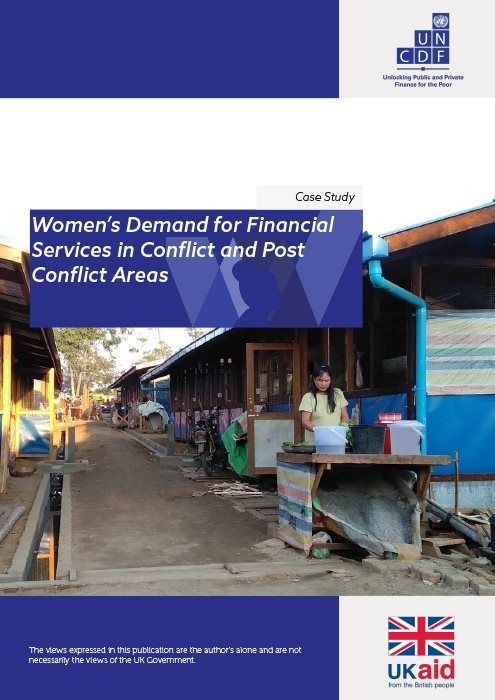During the Women’s Economic and Financial Inclusion Project (WEFIP) inception phase, desk research and field trips were conducted in Kachin, Northern Shan, Rakhine, and Kayah State. Focus group discussions (FGDs) with conflict-affected women as well as meetings with local NGOs and INGOs were conducted. A total of fourteen FGDs were conducted with 146 participants across the four states. 88.5 percent of the participants were women, who represented a range of different ethnic groups. The WEFIP team also met with 24 local NGOs, 12 INGOs, 18 financial service providers and government entities across states and at the national level to further understand the local context and enabling environment.
This case study explores the conditions experienced by women and girls in Kachin, Northern Shan, Rakhine and Kayah states in terms of their demand for and access to financial services and products. It also provides findings in terms of the degree to which women and girls’ financial inclusion is influenced by:
- Demand-side constraints: These are individual and household level constraints that women and girls face, which inhibit their demand for and ability to use financial services and products. They are shaped by intrahousehold decision-making, behavior, division of labour and life cycle needs.
- Supply-side constraints: Market level access to gender sensitive financial services, products and delivery channels, and related non-financial services by other market actors.
- Enabling environment constraints: Laws, regulations, and policies as well as infrastructure and services provided by the state to address barriers and facilitate reforms in which household members and market players operate.
- Socio-cultural contexts: Within socio- cultural contexts, specific informal rules and gender norms govern behaviors, expectations and social interactions. They are enforced by social sanctions and perpetuate and exacerbate all other categories of constraints.
